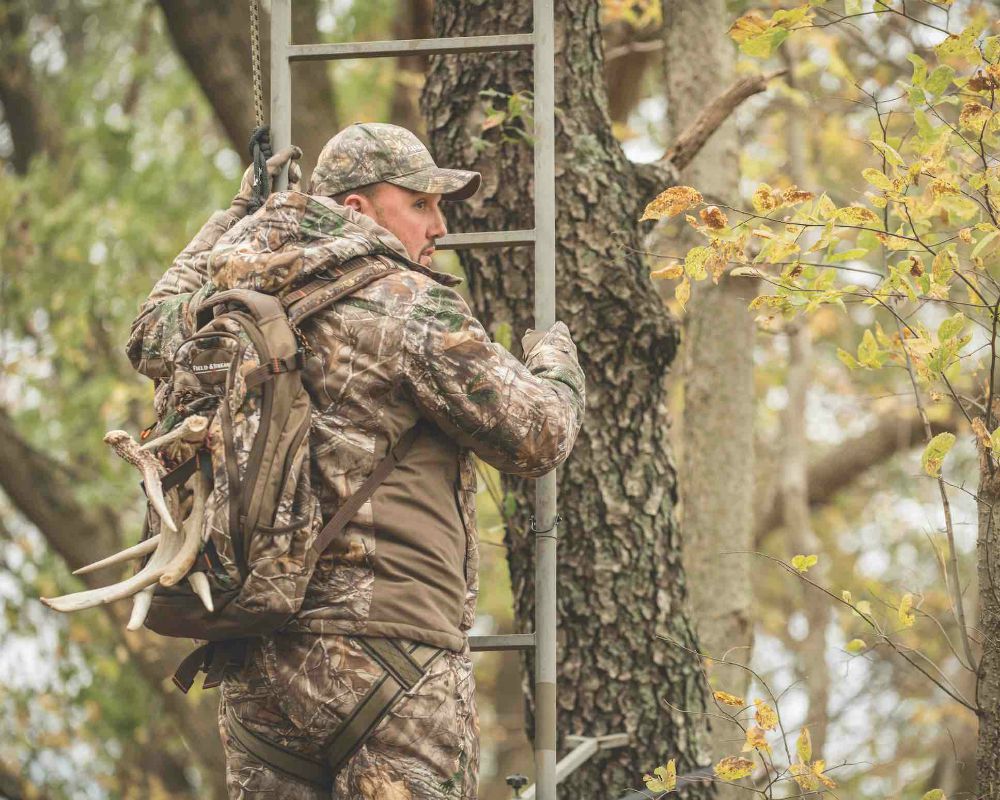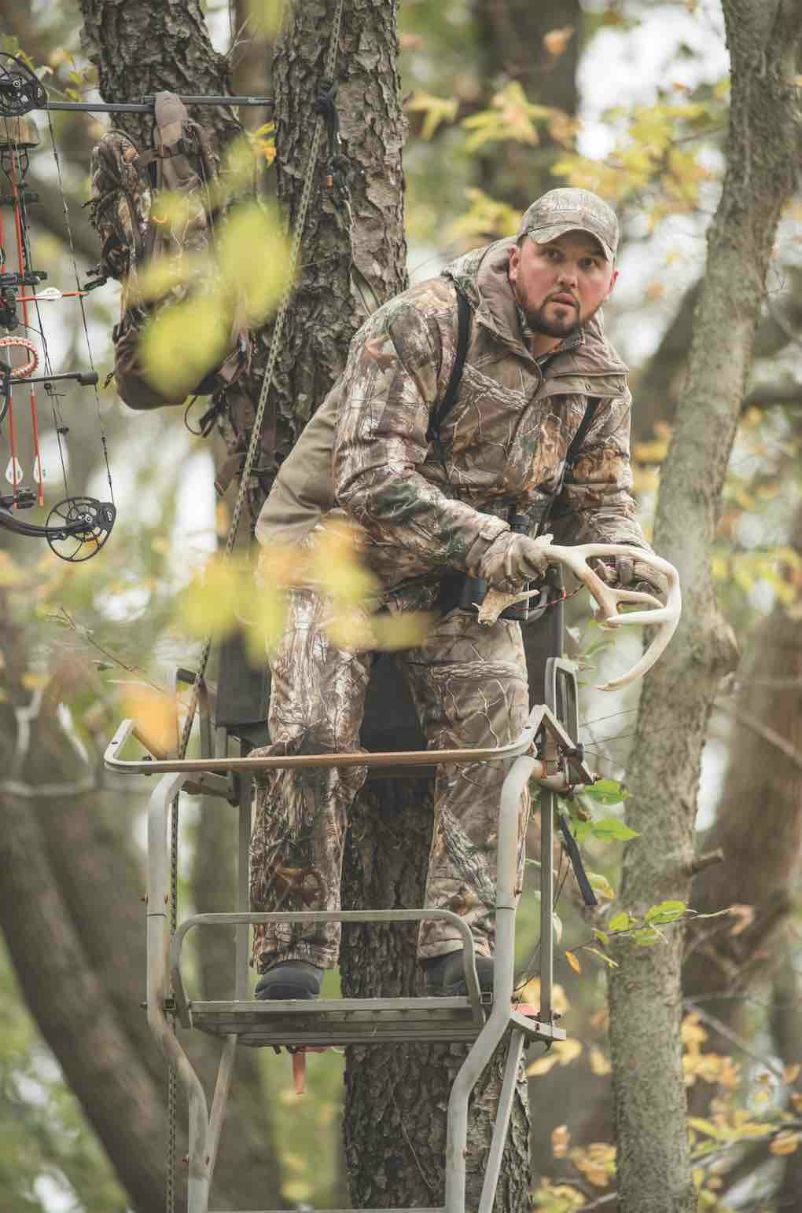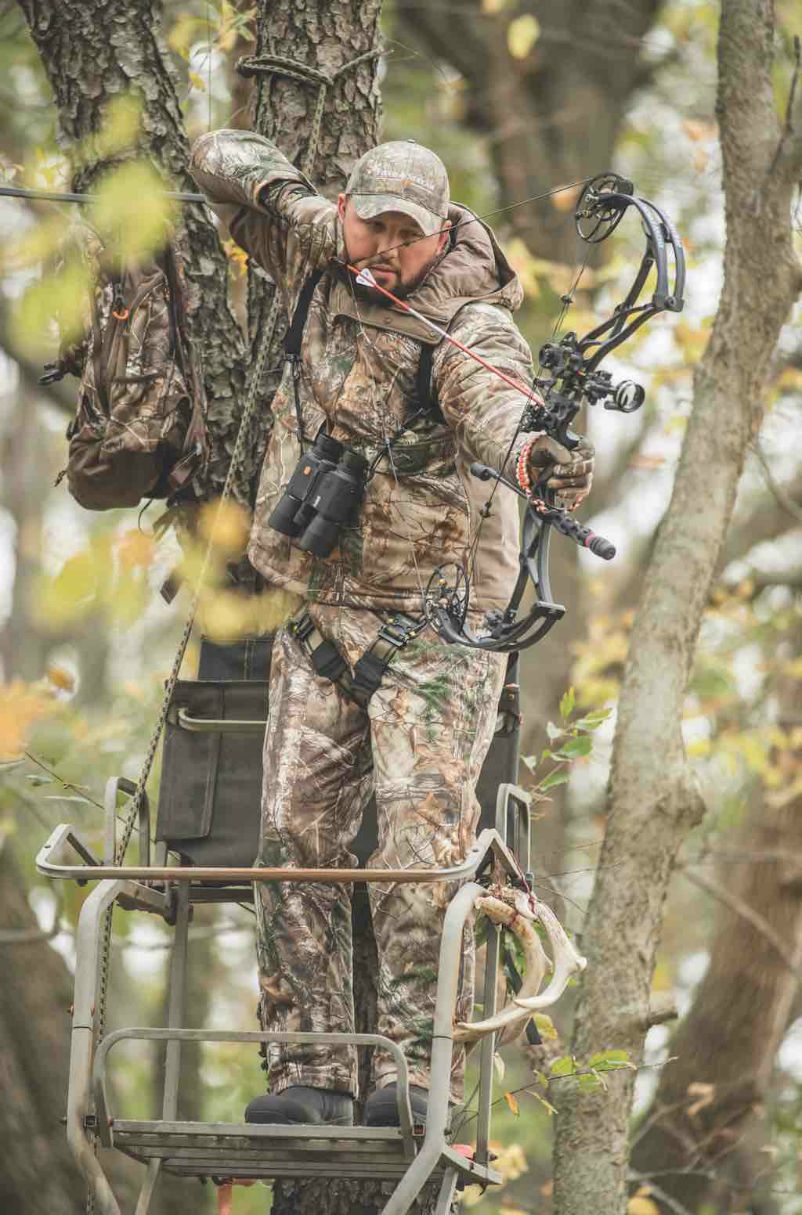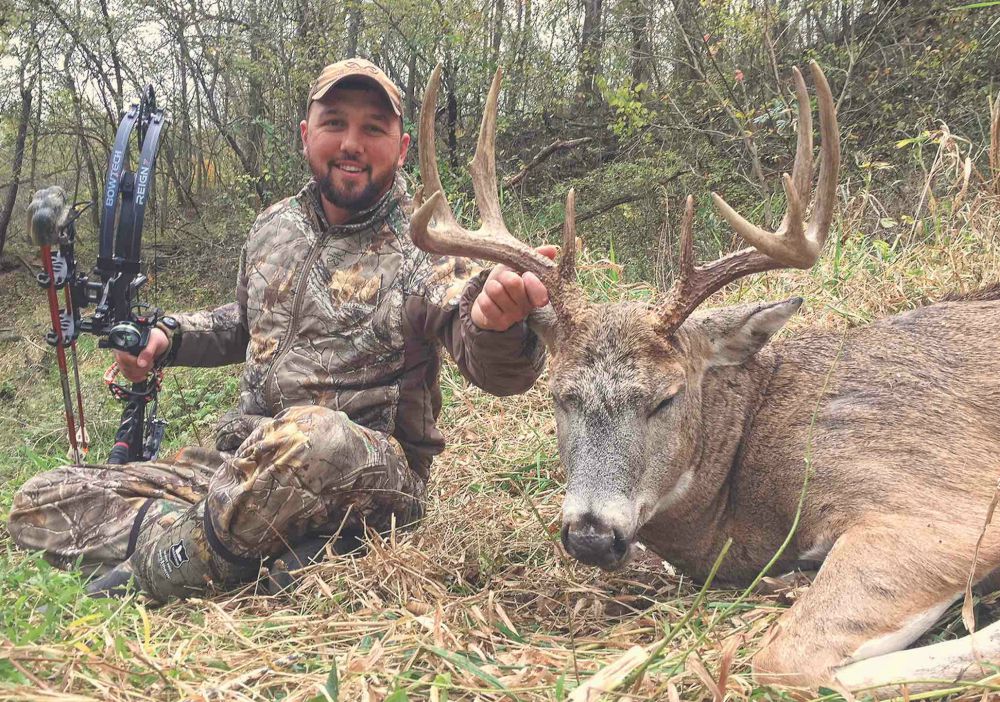 Ah, yes, the Grigsby. It was time, and I was so thankful to be back in Illinois. This is my favorite piece of property in the Midwest to whitetail hunt — I’ve been perched 20-feet up a Grigsby hardwood every fall for over 10 years.
Ah, yes, the Grigsby. It was time, and I was so thankful to be back in Illinois. This is my favorite piece of property in the Midwest to whitetail hunt — I’ve been perched 20-feet up a Grigsby hardwood every fall for over 10 years.
One could make a strong argument that this is the best whitetail property in the Midwest — and possibly in the country — when you are talking about having an opportunity at trophy-sized whitetails on a regular basis. This opportunity is directly related to the expansive size of the farm. It is one of the largest privately owned, continuous tracts of land in the state of Illinois. By having total control over managing such a large acreage, the Grigsby family has the ability to grow some of the best bucks in the country.
Over the past 10 years, I have been able to take most of my archery bucks on the Grigsby during the week of Halloween. This is the golden time to be aggressive when hunting Midwest giants. There are a lot of bowhunters that will disagree with me, but time and time again I have had incredible success during the last week of October. This year we arrived in camp on October 23 with high hopes.
We had only been in camp a few days, and we had not had any measurable time to hunt. All our time had been put into checking our 85 treestands, getting a status on how much food was left in our plots, checking more than 70 cameras and scrolling through those pictures. We had been extremely busy to say the least. Finally, all our prep work was finished, and it was time to crawl into a tree.
When we checked the weather forecast for the first morning, our weather app showed a string of major storms followed by a massive front of cold weather. We were pumped. We knew that once the major storms — storms that were predicted to bring heavy rain — passed, that buck movement would be good. The stage was set for a good eight to 10 days of whitetail bowhunting.
With plenty of time to hunt and with cooler, dryer weather coming, most guys in camp decided to stay behind that first morning. The plan, for most, was to get out after the moisture had past. Not me! Of course, this wasn’t a surprise to anyone in camp. We’ve all hunted together plenty of times, and they knew that if the weather didn’t make things unsafe, my butt would be in a treestand.
Whitetail Washout?
We were greeted with driving rain and gusts up to 40 miles per hour that first morning. The extreme wind simply made being up in a tree unsafe, and the decision was made by everyone, including yours truly, to stay inside and drink coffee.
The hours crawled by. I couldn’t stay off my weather app — watching the radar like a hawk — praying for a break in the conditions. I told my cameraman, Hunter, to stay ready. If I thought we could get in the stand and be safe, we’d be out the door. Big bucks, especially at this time of the year, love to get up and move after a heavy rain.
Most of the crew gave up and went back to bed, but not me. Yes, I know I’m a little hard-headed and ultra-persistent, and I know at times this can be my downfall. However, my school of thought is a simple one: If you're in the woods, there is a zero percent chance you will kill a big buck. Staying at the lodge is not an option as long as it’s safe to be in a tree.
As dawn approached, the weather was starting to lighten up a tad, and I told Hunter we were going. He looked at me and asked, “Have you been outside?” I agreed the weather was bad, but the wind was dying down and the radar showed it would continue to let up a little. I really wanted to push it and get into the stand by first light.
I told Hunter that if the weather was bad when we arrived at our parking spot, we would simply stay in the truck and wait it out. There wasn’t a light on in the house when we left the lodge. Everyone was snuggled back in bed, not even thinking about hitting the woods. Hunter continued to question my sanity. He was really worried about the winds and even getting to our stands — let alone climbing up in them. I knew he was right, but I still wanted to be there in case our conditions improved.
 We pulled into a bottom to hide the truck not far from our stand location. The rain was still pouring down, but the wind gusts had resided a little. They were still pushing in that 20- to 30-mph range, but I felt based on where the stand was set, we would be plenty safe.
We pulled into a bottom to hide the truck not far from our stand location. The rain was still pouring down, but the wind gusts had resided a little. They were still pushing in that 20- to 30-mph range, but I felt based on where the stand was set, we would be plenty safe.
Typically, we try to sneak into our stand locations. Not this time. We just wanted to get up there quickly. By the time we climbed in and got everything set up, I was beginning to question just how smart my decision truly was. I hadn’t told anyone yet, but I had made a major mistake when I left Texas. I didn’t have my rain gear with me on this trip, so I knew if the rain kept up I wouldn’t last long.
My rule of thumb is to get on stand 45 minutes to an hour before the first rays of morning light, but the sun was already creeping up. I sat in the seat of the stand and tried to relax. The rain was slacking off some, so I just pulled my hood over my head and tried to keep the water running off my non-waterproof clothing.
 Conditions Improve
Conditions Improve
As the sun was getting close to showing itself, the rain totally stopped, and the wind reduced to 15 mph. Conditions still weren’t ideal but were much improved since leaving the lodge. The mercury was expected to drop throughout the day, and a few hundred yards away we could see a small buck chasing a doe around in the corner of a bean field. I decided to try some calling. A lot of the mature bucks haven’t found their first hot doe yet, but they are starting to cruise in search of one, making them prime call-in candidates. With the high winds, I wanted to call louder than usual, and then tone my calling down at the end of the series in case a buck was on his way to us. I didn’t want to over-call him if he was trying to dial in on our location.
After a few loud tending grunts, I slapped my horns together and went at it like I do down in Texas. A super-aggressive rattling session for about 45 seconds. I told Hunter to stay ready for the next 10-15 minutes. Sometimes these bigger bucks will really take their time coming in to assess the situation.
Answering the Call
Literally seconds after that first calling sequence, I caught movement behind us. I turned slowly and saw it was a mature buck, and he was coming right toward our stand. He was about 100 yards out and walking in our direction at a steady pace. I grabbed my bow and got ready. I glassed him one last time to confirm he was a shooter. There was no doubt. The buck started to circle our location to get downwind and went from a steady-gait-walk to inching along cautiously.
The buck kept coming, but once he got to where I knew he was going to wind us, I had no shot. He was only 30 yards away, but he was in some thick brush and just staring out into the bean field looking for the two bucks he’d just heard sparring. He stood statue-still for over 10 minutes. I couldn’t move.
 Once he finally broke from his statue-like state, he continued his downwind path. He hit our scent and spun around, running about 20 yards into the thicket again. I figured it was over. I didn’t expect him to stop, but he did. I quickly snatched my grunt call, grunted twice and got his attention again. He stood watching the corner of the field for what felt like an eternity, but it was probably only another minute or two.
Once he finally broke from his statue-like state, he continued his downwind path. He hit our scent and spun around, running about 20 yards into the thicket again. I figured it was over. I didn’t expect him to stop, but he did. I quickly snatched my grunt call, grunted twice and got his attention again. He stood watching the corner of the field for what felt like an eternity, but it was probably only another minute or two.
The buck finally decided to leave, but he was angling toward my shooting lane in the timber behind the stand. I drew my bow when his head hit the end of my shooting lane. I knew the yardage and just had to stop the buck once he was fully in my line of sight. I hit full draw and the buck stopped, but I couldn’t see his vitals. I held the bow for at least a minute, but eventually had to let it down. As soon as I did, the buck started to walk again. I literally had to rip the bow back to full draw and make him stop. Because the wind was blowing so hard, I actually yelled, “Hey buck!” to stop him. That, believe me, was a first. He froze and looked in my direction as I let the arrow fly.
The hit looked solid as the buck ran down the hill and out of sight. About a minute later, I heard him crash. I had an awesome buck on the ground on my first hunt of the season on the Grigsby, and I had done it by pushing the envelope and simply going whitetail hunting when others wouldn’t. I couldn’t wait to get down. I wanted to find the buck and be back at the lodge before the guys were even up and moving around.
This hunt could have had a very different ending, as many times I thought about simply not going. Just remember, you gotta roll the dice, step outside the norm and just get in the woods. If you don’t roll the dice, if you don’t step outside the norm, you’ll never have a chance. It was just a little sweeter when we rolled back into the lodge with the big old brute.

Sometimes going against the grain and pushing the limits yields incredible results. This Illinois brute is a shining example.
What’s New in Whitetails:
The ‘Big 3’ Tactics for Public Land Bucks
Grounded — A Montana Whitetails Story
Video: Woman Arrows 200-class Kansas Whitetail at 20 Yards






